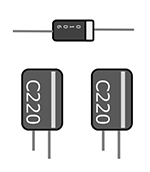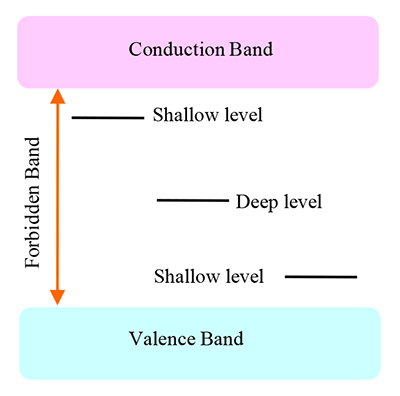ESR of Materials -Electrically Detected Magnetic Resonance 1-
ER170007

EDMR
In evaluating electronic industry materials, there are many opportunities for ESR to play an important role, as the electron spin is related in the process such as power generation, storage and transmission. Electrically Detected Magnetic Resonance (EDMR) method observes the change of electric resistance of the materials due to the change in recombination probability under the influence of the electron spin inversion induced by ESR.
EDMR Targets
- ・Rectifier diode,
- ・Light-Emitting diode,
- ・Fuel Cell,
- ・Solar Cell, etc.
For the materials such as solar cells, light emitting diodes and field effect transistors, recombination center is located at shallow level and EDMR detection is sometimes difficult. Even in such cases, EDMR may be observed at extremely low temperature.
EDMR information
By use of EDMR method, information of materials directly related to their property is expected.
- Voltage dependence → Switching characteristics, Durability
- Bias dependence → Withstand voltage
- Mod. Frequency dependence → Recombination rate
- Angular dependence → Defect structure
- Temperature dependence → Recombination mechanism, Durability
EDMR observation
In the forbidden band, there is a recombination center (impurity level) that has the function of capturing the other carrier as soon as one electron or hole is captured. The facility to detect EDMR signal of semiconductor depends on the position of the recombination center in the forbidden band. In case recombination center is located at a position away from the band (deep level), the EDMR signal is easily observed even at room temperature. Most of the deep levels are not ionized and kept neutrally in charge. It emits electron or hole by the application of voltage or temperature rise. In the pn junction doped with a transition metal such as platinum (Pt), it is known that the EDMR signal is easily observed since the recombination center is formed at deep level [1].

Fig.1 Energy Band
- Please see the PDF file for the additional information.
Another window opens when you click. 
PDF 304 KB
SEARCH APPLICATIONS
Related Products
Are you a medical professional or personnel engaged in medical care?
No
Please be reminded that these pages are not intended to provide the general public with information about the products.
